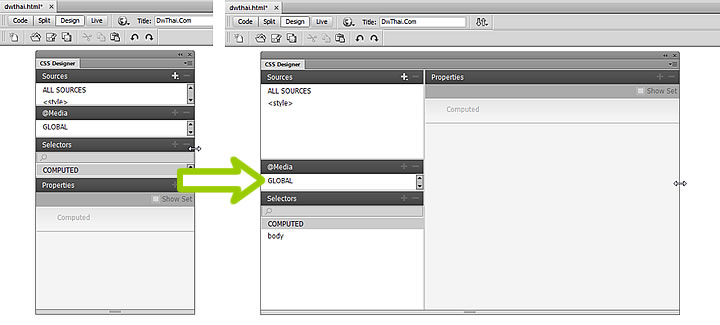


To be successful using CSS in Dreamweaver, you only have to know how CSS works, then be able to navigate through and use the features Dreamweaver provides for creating CSS. Dreamweaver will do the writing of the code for you. Please don't fret if all this sounds confusing right now. Also, don't worry if you don't know how to write CSS code – or don't think you can learn it. You do all of this by applying style sheets. This is a quicker, more efficient way to apply style whether than always using HTML. For example, you can make all headers tagged H1 appear in Times New Roman, green font. You can make the body of your text on every page, on one page, or in just one section appear as Calibri boldfaced – or Arial. H1 is a header that's used at the beginning of a section. Here's an example of a style. You can use a style to change the appearance of all text in your document that is tagged H1.

Style definitions contain information about the text font, white space surrounding the text, the color and size of the text, and other attributes such as border, shading, alignment, etc. You can apply a style to a range of text, an entire page, an entire website, or an image. A style can be defined by Class or ID attributes inside the tags. CSS, or a Cascading Style Sheet, allows you to apply styles to your documents. A Cascading Style Sheet is basically a direction for your document. It tells your document what type of font to apply to your document, what colors to use, as well as other styles.īut what is a style? A style in Dreamweaver refers to either an HTML style or a style definition in a Cascading Style Sheet. Of course, in this article, we're going to strictly talk about CSS style.


 0 kommentar(er)
0 kommentar(er)
